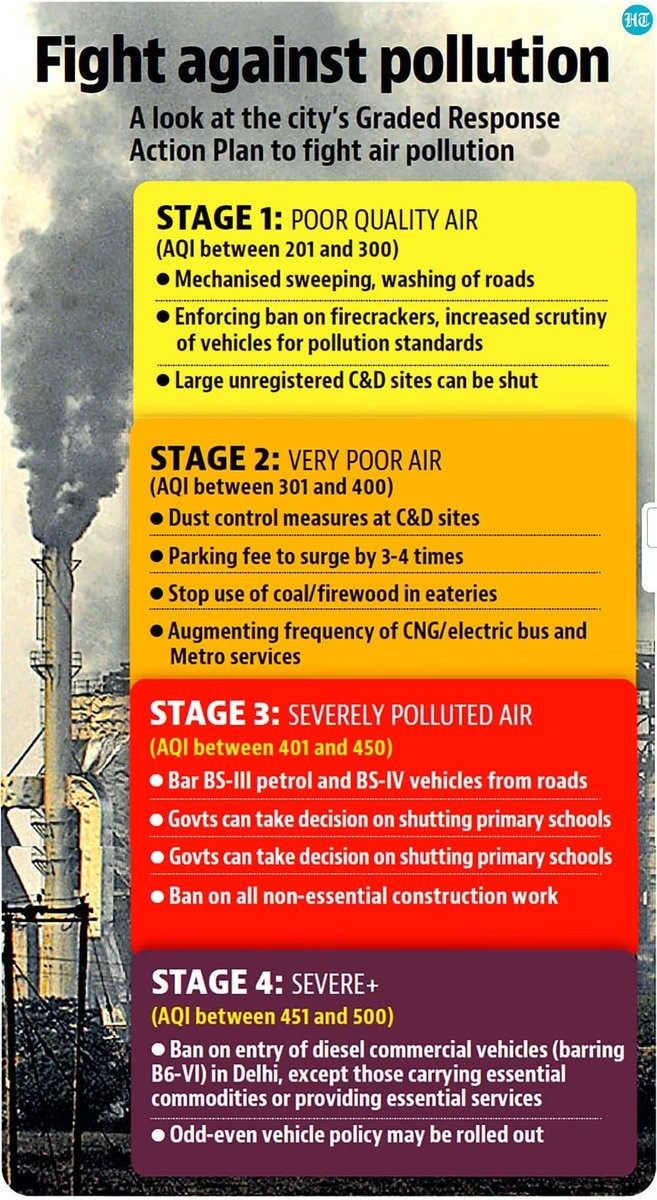Delhi’s average air quality in October was in the very poor category at 356 — the worst in the country, as per the Central Pollution Control Board.
The most polluted months in the year are generally November, December and January, according to the data on monthly AQI averages.
|
Particulate Matter Sources |
PM10 |
PM2.5 |
|
Road Dust |
56% |
38% |
|
Transport Sector |
9% |
20% |
|
Industrial Emissions |
10% |
11% |
|
Domestic Fuel Burning |
11% |
12% |
World Health Organisation suggest that daily average PM 2.5 levels should not exceed 15 µg/m3 and for PM 10 levels, the limit is set at 45 µg/m3. Recent data from the Delhi Pollution Control Committee (DPCC), the PM 2.5 and PM 10 levels reached up to 445 µg/m3 and 1,566 µg/m3.
Graded Response Action Plan (GRAP) – Commission for Air Quality and Management (CAQM) activates various measures under GRAP plan depending on Air Quality Index levels.
